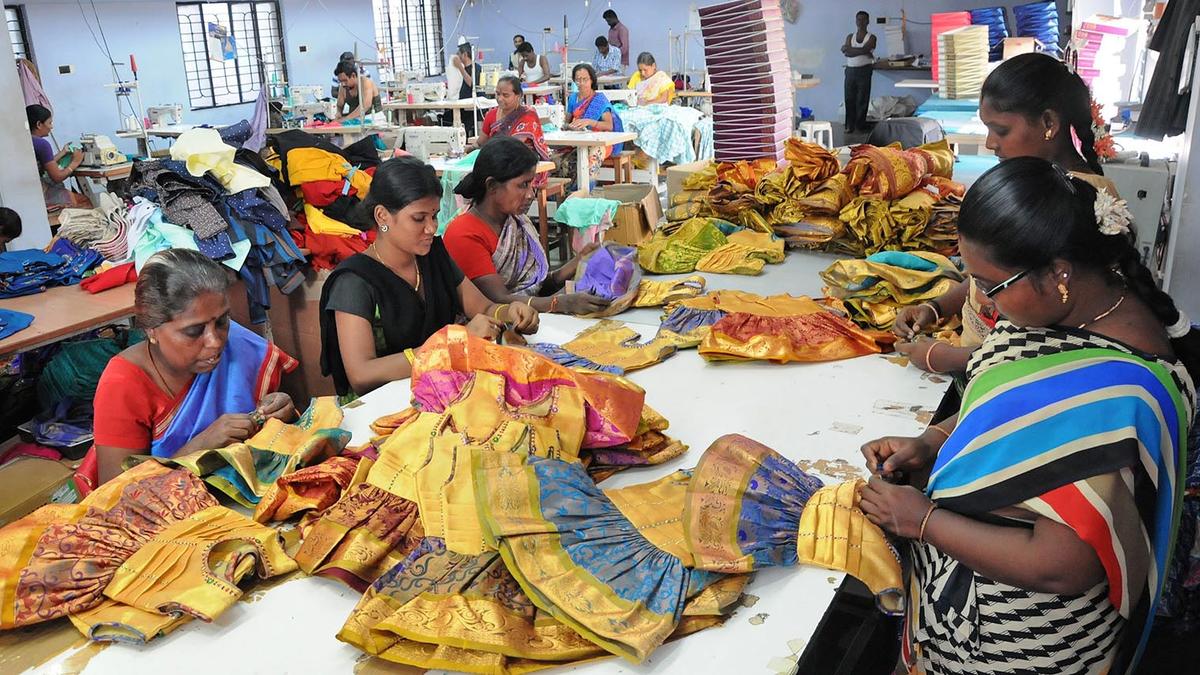
Reviving demand for industrial growth Premium
The Hindu
The Budget attempts to revive growth by stimulating aggregate demand in the economy, with a crucial role assigned to the industrial sector
Assuming a conservative GDP growth rate of 10.1% for FY26, the Budget accords priority for fiscal consolidation. The ‘cautious’ GDP forecast appears to be realistic for tax revenue projections, given the uncertainties in the global economy and growth slowdown in the domestic economy.
Importantly, even with these moderate growth expectations, the government has shown resolution in lowering the fiscal deficit. There are two implications of this. First, there exists a possibility of pegging the fiscal deficit to below 4% in the medium term; and second, there is no room for concerns on liquidity in the financial system as an expanded borrowing programme would have caused disturbances in the market.
Given this fiscal path, the gross borrowings would be ₹14.8 trillion against ₹14 trillion in FY25. As the liquidity is under pressure currently, a higher level of borrowing could have caused disruptions in the market impacting investments. Given this macro fiscal stance, the Budget attempts to revive growth by stimulating aggregate demand in the economy, with a crucial role assigned to the industrial sector.
There are three aspects to note about the industrial sector. First, industrial growth, especially that of manufacturing, exhibits frequent fluctuations with sectoral and spatial growth differences often dampening employment creation and GDP growth. Second, despite numerous incentives, export growth has been sluggish, with low productivity growth, competitiveness, and research and development activity. Third, private investments are not keeping pace with governments efforts to encourage them through incentives and concessions.
Two broad sets of measures can be deciphered to boost industrial growth: (a) economy-wide measures to tackle supply bottlenecks and bolster demand and (b) sector-specific policies to enhance output and exports. In the first set, there has been a continued focus on capital expenditure (capex), which is targeted to be ₹11.2 lakh crore, higher than the revised numbers for FY25. The focus remains on roads, railways, and defence, which is expected to generate multiplier effects in the economy. Further, to step up investments, various measures have been announced across ministries focusing on fostering public-private partnership deals along with States. There is also an emphasis on investment in urban infrastructure with funding supported by issuance of bonds.
In terms of stimulating demand, the government has attempted to tackle consumption through changes in income tax rates and has given major concessions for individuals. Complementing this is the focus on social welfare and development through programmes such as PM KISAN, MGNREGA, and PM Awas Yojana. A combination of tax relief and welfare provisioning along with continued capex is expected to generate higher demand and fuel industrial growth.
Regarding targeted measures for the manufacturing sector, the emphasis has been on three areas: employment and skills, MSMEs, and export promotion. The focus on manufacturing of electronics, toys, and footwear is important, as these are one of the biggest export baskets of China to the U.S. With the U.S. imposing more tariffs on China, it is prudent to focus on domestic production. The emphasis on leather products and production of toys by developing clusters and a manufacturing ecosystem is expected to generate employment in the industrial sector. Four initiatives have been announced for export promotion: an export promotion mission to be driven jointly by the Ministries of Commerce, MSME, and Finance; the BharatTradeNet a digital public infrastructure; a national framework to be formulated as guidance to States for promoting Global Capability Centres in emerging Tier 2 cities; and warehousing facility for air cargo to facilitate the upgradation of infrastructure. For MSMEs, the loan limit under the Modified Interest Subvention Scheme will be increased from ₹3 lakh to ₹5 lakh. Further, a new scheme will be launched for five lakh women entrepreneurs from Scheduled Castes and Scheduled Tribes.

The Budget has proposed the setting up of a Maritime Development Fund to support India’s maritime sector by providing financial assistance, via equity or debt securities, which will directly benefit in financing for ship acquisition and aims at boosting Indian-flagged ships’ share in the global cargo volume up to 20% by 2047.

 Run 3 Space | Play Space Running Game
Run 3 Space | Play Space Running Game
 Traffic Jam 3D | Online Racing Game
Traffic Jam 3D | Online Racing Game
 Duck Hunt | Play Old Classic Game
Duck Hunt | Play Old Classic Game
















